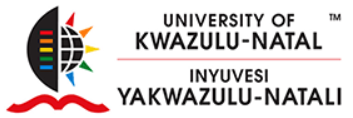UKZN students develop a taste for technology of 3D food printing
The annual Mechanical Engineering Open Day at the University of KwaZulu-Natal was held recently at the Unite School of Engineering Building, Howard College Campus. Fourth-year engineering students displayed months' worth of hard work on 20 ingenious design projects to evaluators, sponsors, parents and the public.
The projects form part of the degree requirements in final year Design and Research Project modules, and students are allocated projects and groups of three or four other students at the beginning of the year. The projects provide the opportunity to gain experience for the working world and put the skills learned throughout their degrees to the test.
Nzuzo Nene, Aravind Arunakirinathar and Divya Naidoo, supervised by Avern Athol-Webb, have spent much of this year developing their desktop 3D food printer with a gear pump design that eliminates the need to constantly replace syringes.
Naidoo said 3D printing of food represents a new frontier in the culinary industry, where printers are being used to save time and effort, and to pioneer elaborate and original designs and ingredients. They are used throughout the culinary world, in commercial kitchens, bakeries, confectionaries and by hobbyists, and NASA even commissioned a 3D food printer design for use by astronauts on deep space missions.
The group also mentioned the potential for 3D printers to be used to combat the global challenge of food scarcity by producing healthy, nutritious food on a mass scale.
For their design, the team noted that in order to print foodstuffs, food is required in a liquid or paste form for extrusion, with existing 3D printers using syringes to deposit the food onto the print bed. The group focused on improving this syringe mechanism to eliminate the need to swap out syringes when the food is depleted, and achieved this by developing a unique gear pump extruder inspired by ChocoL3D's chocolate extruder. To test this design against existing syringe mechanism designs, they developed a syringe pump that will print the same foods as the gear pump and compare print resolution, height and accuracy.
The group also focused on the print bed, as regular 3D printers usually make use of a heated print bed for materials going from a solid to liquid state, the reverse of what happens in a 3D food printer. In a 3D food printer, a cooling bed is therefore more suitable, leading the trio to design a cooling bed with thermoelectric coolers.
The group had to overcome a number of challenges in their design process, one being the manufacturing of the gears required for the gear pump, since these were too small to be machined or cut, resulting in the group 3D printing the gears from food-safe nylon with the assistance of RAPID3D. To develop a suitable cooling mechanism that was within their budget, the team considered a number of options, settling on Peltier coolers since they would achieve the necessary few degrees of cooling.
At the recent Open Day, the team used chocolate as their printing material (although the printer can accommodate other types of food if small adjustments are made to its settings). They will demonstrate their extruder designs and undertake experimental tests on different types of chocolate. They will also show visitors a video or live demonstration of their syringe pump icing a cake.
